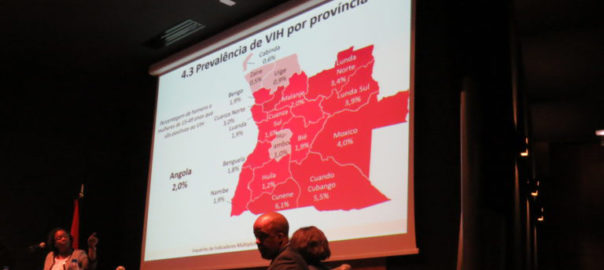Inside Angola’s First-ever DHS Survey

 In 2017, three new countries joined the list of those who have implemented nationally representative and internationally comparable Demographic and Health Surveys, setting a baseline by which to measure progress on standardized health indicators. Earlier this year, Afghanistan and Myanmar released the results of their first DHS surveys, and as of June 30, Angola, too, could use the 2015-16 Angola DHS to make decisions based on comprehensive, reliable data.
In 2017, three new countries joined the list of those who have implemented nationally representative and internationally comparable Demographic and Health Surveys, setting a baseline by which to measure progress on standardized health indicators. Earlier this year, Afghanistan and Myanmar released the results of their first DHS surveys, and as of June 30, Angola, too, could use the 2015-16 Angola DHS to make decisions based on comprehensive, reliable data.
Angola had previously implemented several Multiple Indicator Cluster Surveys (MICS). By 2015, however, stakeholders were especially interested in HIV and malaria biomarkers, and the donor community and the National Institute of Statistics (INE) decided to fund and implement a DHS survey, known in Angola as the Inquérito de Indicadores Múltiplos e de Saúde (IIMS).
Implementing a DHS survey is always an immense undertaking, but doing it for the first time heightens the level of challenges. As a first-time implementing agency, INE didn’t have the benefit of lessons learned from previous surveys. The indicators were new to them, and many pieces of DHS-7 documentation were not yet available in Portuguese. The lab had never conducted some of the assays necessary for the HIV testing algorithm. Each stakeholder had its own wish list regarding questionnaire modules, biomarkers, and timelines.
INE, together with The DHS Program, worked to overcome these challenges. The Minister of Health’s forward to the report states,
“This report is the result of nearly 18 months of continuous work, from the preparation of the IIMS to its implementation, which included fieldwork, data processing and analysis of indicators.”
Behind this statement lie scenes of compromise, creative problem solving, and many hours of hard work. Stakeholders decided to limit biomarkers collected in order to prioritize the most pressing questions and expedite the timeline. Cartographers were added to teams to accelerate fieldwork and to improve the quality of household listing. Multiple technical assistance visits were made during fieldwork and lab testing of blood samples for HIV to ensure data quality on the part of teams who were new to DHS procedures. Through these collaborative strategies, the capacity of both INE and the Serology Lab at the National Institute of Public Health to implement nationally representative surveys was greatly strengthened, building on their already high-quality work.
In his comments at the national seminar, the Secretary of the Ministry of Planning and Territorial Development described the magnitude of the IIMS survey. “It is because of the size of this undertaking,” he continued, “that we are able to accurately show the results of our public policies that were designed to improve lives.” The USAID/Angola Mission Director followed, asking, “Why invest in a DHS survey? To have data of this quality for the first time, particularly HIV prevalence in all provinces. But data are only useful if they are used in decision making.”
While INE’s has finished implementing Angola’s first DHS survey, the work continues. Program managers and policymakers, for the first time, can dive into the fullness of DHS data to make decisions that will improve the lives of Angolans.

Photo Caption: Presentation from the Angola National Seminar in Luanda, Angola.

